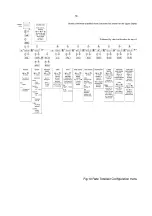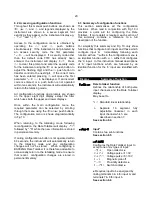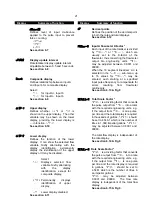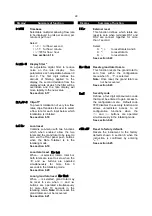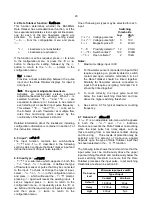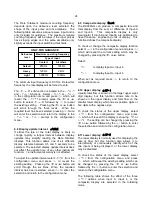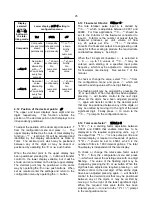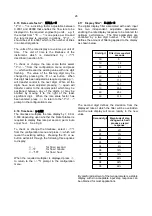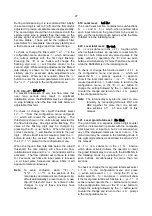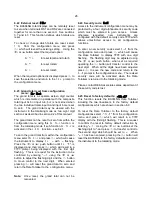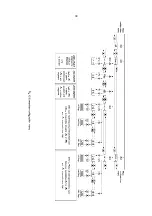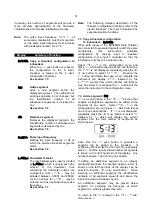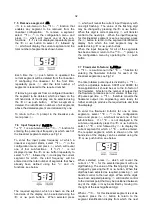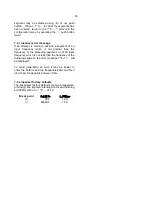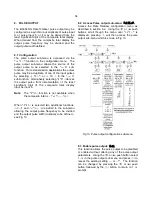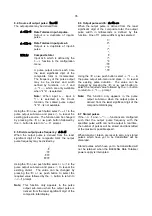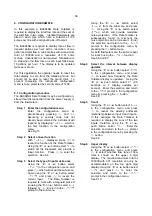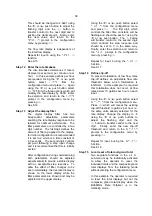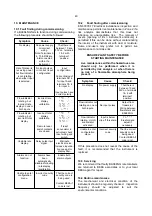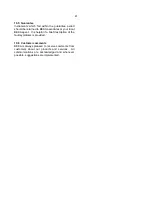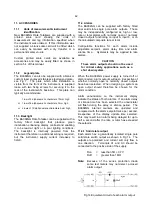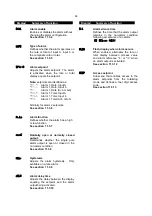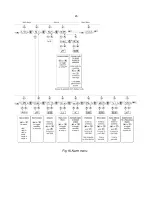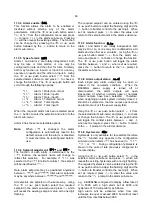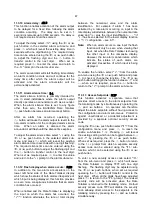
32
7.5 Remove a segment:
dEL
dEL
is a sub-menu in the
FACtor-A
function that
enables any segment to be removed from the
lineariser configuration. To remove a segment,
select
FACtor-A
in the configuration menu and
press
(
, which will reveal one of five sub-
functions. If
dEL
is not displayed, repeatedly press
the
&
or
*
button to select
dEL
followed by
(
which will display the current segment and the
total number of segments as shown below:
Each time the
(
push button is operated the
current segment will be deleted from the lineariser.
If configuring the lineariser for the first time,
repeatedly press
(
until the total number of
segments is reduced to the required number.
If removing a segment from a configured lineariser,
the segment to be deleted, which is shown on the
left hand side of the display, can be selected using
the
&
or
*
push button. When a segment is
deleted, the identification numbers of all segments
above the deleted segment are decreased by one.
To return to the
dEL
prompt in the lineariser sub-
menu press
)
.
7.6 Input frequency:
PuL5E Fr
PuL5EFrE
is a sub-menu in the
FACtor-A
function for
entering the pulse input frequency at which each of
the lineariser segments starts, see Fig 12.
To enter the input pulse frequency at which a
lineariser segment starts, select
FACtor-A
in the
configuration menu and press
(
, which will reveal
one of four sub-functions. If
PuL5E Fr
is not
displayed press the
&
or
*
button repeatedly to
select
PuL5E Fr
followed by
(
to display the current
segment for which the start frequency will be
entered and the total number of segments that have
already been defined using the
Add
and
dEL
functions, see below.
The required segment, which is shown on the left
hand side of the display, can be selected using the
&
or
*
push buttons. When selected press
(
which will reveal the current input frequency with
one digit flashing. The value of the flashing digit
may be changed by pressing the
&
or
*
button.
When this digit is correct pressing
(
will transfer
control to the next digit. When the input frequency
for this lineariser segment is set as required, press
the
)
button to return to the segment identification
display from which the next segment may be
selected using
&
or
*
push buttons.
When the input frequency for all of the segments
has been entered, return to the
FACtor-A
prompt in
the configuration menu by operating the
)
push
button.
7.7 Flowmeter K-factors:
L_FACtor
L_FACtor
is a sub-menu in the
FACtor-A
function for
entering the flowmeter K-factor for each of the
lineariser segments, see Fig 12.
The rate totaliser pulse input is divided by
L_FACtor
which is adjustable between 0.0001 and 99999; for
flow applications it should be set to the K-factor of
the flowmeter. K-factor is the number of pulses that
the flowmeter produces per unit volume of flow e.g.
20 pulses per litre.
L_FACtor
therefore converts the
flowmeter output into engineering units ready for
further scaling to produce the required rate and total
flow displays.
To enter the flowmeter K-factor for one or more
segments, select
FACtor-A
in the configuration
menu and press
(
, which will reveal one of four
sub-functions. If
L_FACtor
is not displayed in the
sub-menu repeatedly press the
&
or
*
button to
select
L_FACtor
and followed by
(
to display the
current segment for which
L_FACtor
will be entered.
The required segment, which is shown on the left
hand side of the display, can be selected using the
&
or
*
push button, see below.
When selected, press
(
which will reveal the
current
L_FACtor
for the selected segment with one
digit flashing. The value of the flashing digit may be
changed by pressing the
&
or
*
button. When this
digit has been adjusted as required, pressing
(
will
transfer control to the next digit. When all the digits
have been adjusted pressing
(
will transfer control
to the decimal point that may be positioned between
any of the digits, or may be omitted by moving it to
the right of the least significant digit.
When
L_FACtor
for this lineariser segment is set as
required, press the
)
button to return to the
segment identification display from which the next

